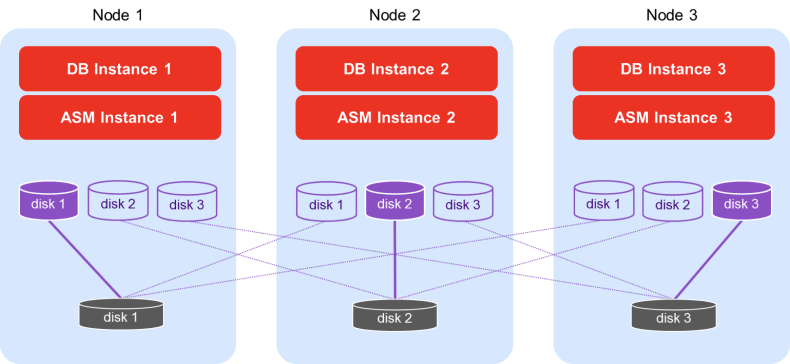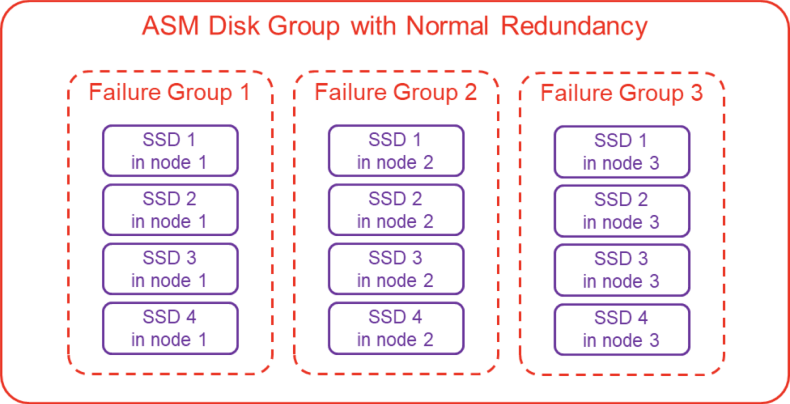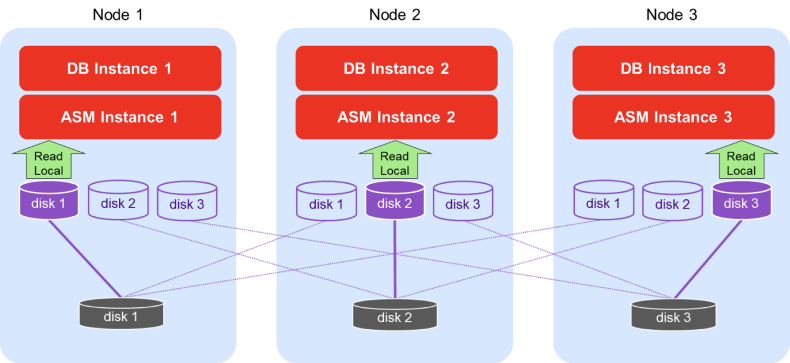The requested page is available in English only. We are working to translate more pages. We appreciate your understanding.
FlashGrid Storage Fabric
Software-defined storage for Oracle RAC clusters. Forget storage arrays.
FlashGrid Storage Fabric software enables high-speed shared storage for Oracle clusters in a variety of infrastructure environments including bare-metal servers, private and public clouds, virtual machines, or extended distance clusters.
Architecture
Shared storage access
FlashGrid Storage Fabric makes every storage device accessible from every database node in the cluster.

High availability and data mirroring
FlashGrid has a fully distributed architecture with no single point of failure. FlashGrid leverages Oracle ASM’s existing capabilities for mirroring data. In Normal Redundancy mode each block of data has two mirrored copies. In High Redundancy mode each block of data has three mirrored copies. Each ASM disk group is divided into failure groups – one failure group per node. Each disk is configured to be a part of a failure group that corresponds to the node where the disk is physically located. ASM makes sure that mirrored copies of a block are placed on different failure groups. In Normal Redundancy mode the cluster can withstand loss of one (converged or storage) node without interruption of service. In High Redundancy mode the cluster can withstand loss of two (converged or storage) nodes without interruption of service.

FlashGrid Read-Local™ Technology
In converged clusters the read traffic can be served from local SSDs at the speed of the PCIe bus instead of travelling over the network. In 2-node clusters with 2-way mirroring or 3-node clusters with 3-way mirroring 100% of the read traffic is served locally because each node has a full copy of all data. Because of the reduced network traffic the write operations are faster too. As a result, even 10 GbE network fabric can be sufficient for achieving outstanding performance in such clusters for both data warehouse and OLTP workloads. For example, a 3-node cluster with four NVMe SSDs per node can provide 30 GB/s of read bandwidth, even on a 10 GbE network.

Designed for Oracle clusters







